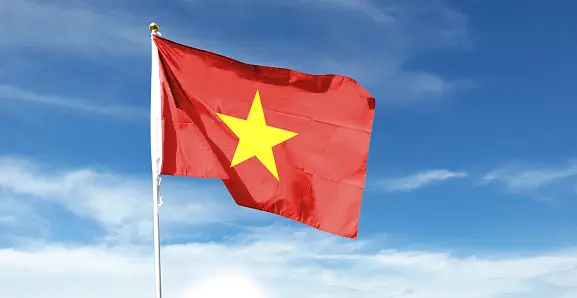
'삼색기'라고도 알려진 베트남 국기는 베트남의 역사, 문화, 정체성을 상징합니다. 국기는 빨간색, 노란색, 파란색의 세 개의 가로 줄무늬로 구성되어 있으며 왼쪽에는 빨간색 줄무늬, 가운데 노란색 줄무늬, 오른쪽에는 파란색 줄무늬가 있습니다. 각 색상에는 고유한 의미와 의미가 있으며, 이 블로그 게시물에서 이에 대해 살펴보겠습니다.
빨간색은 외국 침략자들에 맞서 독립과 자유를 위해 싸운 베트남 국민의 피를 나타냅니다. 이는 조국을 보호하려는 그들의 용기, 희생, 결단을 상징합니다.
노란색은 빛, 따뜻함, 희망의 상징인 태양을 나타냅니다. 이는 베트남의 밝은 미래와 국가의 문화 및 역사적 유산을 나타냅니다.
파란색은 베트남의 지리와 경제에 필수적인 바다와 하늘을 나타냅니다. 이는 국가의 풍부한 천연자원과 동남아시아의 전략적 위치를 상징합니다.
국기의 디자인도 중요하며 왼쪽에 빨간색 줄무늬, 중앙에 노란색 줄무늬,
The Vietnamese flag, also known as the "Tricolor flag," is a symbol of Vietnam's history, culture, and identity. The flag consists of three horizontal stripes of red, yellow, and blue, with the red stripe on the left, the yellow stripe in the middle, and the blue stripe on the right. Each color has its own unique meaning and significance, which we will explore in this blog post.
Red represents the blood of the Vietnamese people who fought for independence and freedom against foreign invaders. It symbolizes their courage, sacrifice, and determination to protect their homeland.
Yellow represents the sun, which is a symbol of light, warmth, and hope. It represents the bright future of Vietnam, as well as the country's cultural and historical heritage.
Blue represents the sea and the sky, which are essential to Vietnam's geography and economy. It symbolizes the country's rich natural resources and its strategic location in Southeast Asia.
The flag's design is also significant, with the red stripe on the left, the yellow stripe in the middle, and
